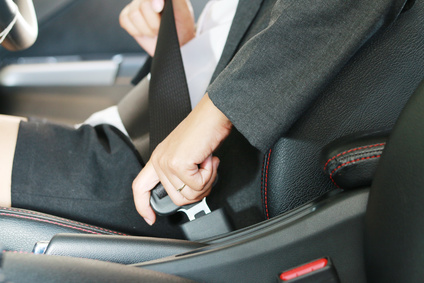 To our parents, having a safe car meant having decent tires, secure seat belts and working airbags. While we still need those features, advances in automotive technology have given us new safety perks such as lane departure alerts, accident avoidance systems, backup cameras and more. If you haven’t shopped for a car in a while, you may not know which safety devices are the most important. Here are our top ten must-have vehicle safety features for 2015.
To our parents, having a safe car meant having decent tires, secure seat belts and working airbags. While we still need those features, advances in automotive technology have given us new safety perks such as lane departure alerts, accident avoidance systems, backup cameras and more. If you haven’t shopped for a car in a while, you may not know which safety devices are the most important. Here are our top ten must-have vehicle safety features for 2015.
1. Seat Belts
Seat belts are the single most effective safety features in any car. They save lives and reduce the chances of crash-related injuries by half. Seat belts have been a required safety feature installed in all new cars for 40 years.
2. Front and Side Airbags
Airbags are required safety features in every car and are vital in keeping you safe. Front airbags protect the head and chest of the driver and front passenger during a head-on collision, while side airbags do the same in a side-impact crash.
3. Anti-Lock Brakes
An anti-lock braking system (ABS) helps you avoid accidents by preventing your wheels from locking when you must brake forcefully; this is especially useful when rain or ice is present on the road because it can decrease stopping distance, and stabilize your vehicle.
4. Electronic Stability Control
Electronic stability control (ESC) uses computer-driven sensors to respond to your steering and your car’s rotation as you drive. It is especially useful for reducing the chances of vehicle rollover. ESC can automatically apply brakes or reduce engine power to help you maintain control of your vehicle.
5. Backup Cameras
A backup camera allows you to clearly see what is behind your vehicle. Accidents involving cars backing over small children or others result in hundreds of deaths and thousands of injuries every year. If consumer advocacy groups are successful, backup cameras may be a required feature in the future.
6. Collision Warning System
Collision warning systems use laser sensors, radar and other technologies to detect an impending crash, and reduce its impact or avoid it completely.
7. Lane Departure Alert System
If you have a tendency to take your eyes off the road and wander, a lane departure warning system can prevent you from colliding with a car or other object. The system is mounted behind your rear view mirror and works by monitoring lane markings.
8. All-Wheel Drive
All-wheel drive distributes power evenly to both the front and rear wheels of your car to help improve traction in your vehicle.
9. Head Restraints
Head restraints limit head movement in the event of a rear-impact crash; this reduces the risk of a serious neck injury and are built into the vehicle’s seat.
10. Extra Weight
Heavier vehicles provide more protection than lighter ones with the same safety features, especially in crashes involving two cars.
Driving on the roads can be dangerous, especially with all the distracted driving happening all around us, but having these safety features can keep you safe as you and your family are out on the road.
